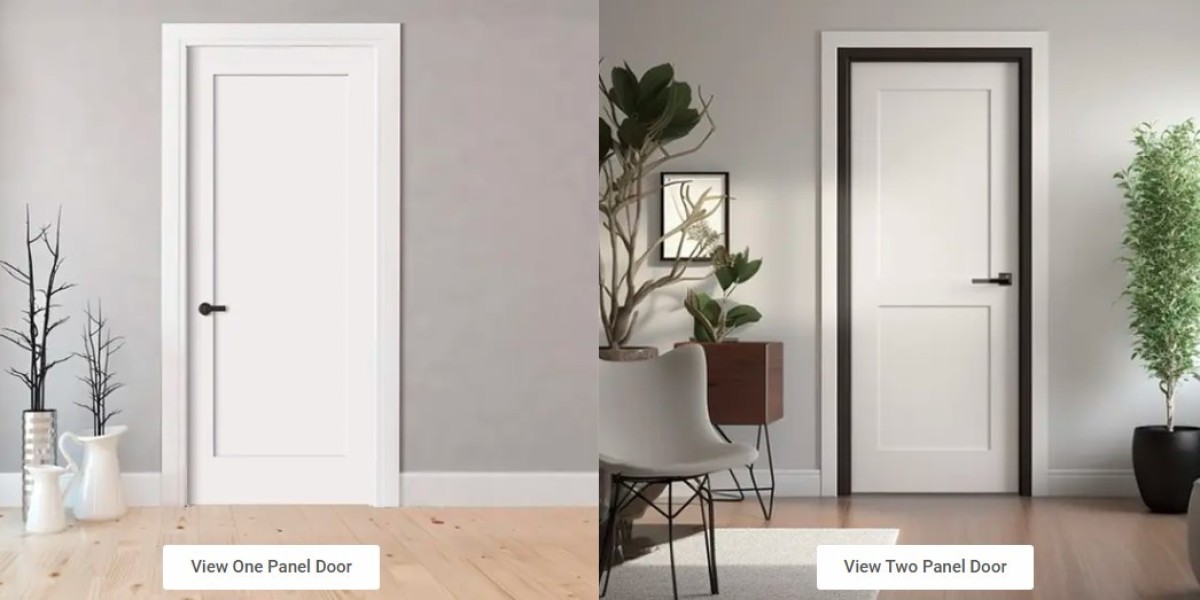When it comes to selecting doors for your home or commercial space, understanding the differences between a hollow core door interior and a fire rated interior garage door is crucial. Both serve distinct purposes, and choosing the right one depends on factors like safety, durability, insulation, and cost.
In this blog, we’ll explore:
What is a hollow core interior door?
What is a fire-rated interior garage door?
Key differences between the two
Best applications for each type
Cost comparison
Installation considerations
By the end, you’ll have a clear understanding of which door suits your needs best.
1. What is a Hollow Core Interior Door?
A hollow core door is a lightweight interior door made with a thin veneer over a honeycomb or grid-like cardboard core. These doors are commonly used for bedrooms, bathrooms, and closets because they are affordable and easy to install.
Pros of Hollow Core Doors:
✅ Affordable – One of the cheapest door options available.
✅ Lightweight – Easy to handle and install.
✅ Variety of Finishes – Available in different styles, colors, and textures.
✅ Sound Dampening (Minimal) – Provides basic privacy but not true soundproofing.
Cons of Hollow Core Doors:
❌ Not Durable – Prone to dents, scratches, and damage.
❌ Poor Insulation – Offers little thermal or sound insulation.
❌ Not Fire-Resistant – Can easily burn in a fire.
❌ Limited Security – Easily broken if forced.
Best Uses for Hollow Core Doors:
Interior rooms where fire resistance isn’t required
Budget-friendly home projects
Temporary or low-traffic areas
2. What is a Fire-Rated Interior Garage Door?
A fire-rated interior garage door is designed to resist fire for a specified period (usually 20 minutes to 90 minutes). These doors are often required by building codes in garages, utility rooms, or spaces connected to living areas to prevent fire spread.
Pros of Fire-Rated Garage Doors:
✅ Fire Resistance – Slows down fire spread, providing escape time.
✅ Enhanced Safety – Meets building code requirements for attached garages.
✅ Durable Construction – Made from steel, solid wood, or fire-resistant materials.
✅ Better Insulation – Often includes fireproof insulation.
Cons of Fire-Rated Garage Doors:
❌ More Expensive – Higher cost than hollow core doors.
❌ Heavier – Requires sturdy framing and proper installation.
❌ Limited Design Options – Typically utilitarian in appearance.
Best Uses for Fire-Rated Garage Doors:
Garages attached to homes
Commercial buildings with fire safety regulations
Utility rooms or workshops near living spaces
3. Key Differences Between Hollow Core and Fire-Rated Garage Doors
| Feature | Hollow Core Interior Door | Fire-Rated Interior Garage Door |
|---|---|---|
| Material | Thin veneer over cardboard core | Steel, solid wood, or fire-resistant core |
| Weight | Lightweight | Heavy-duty |
| Fire Resistance | None | 20-90+ minutes |
| Durability | Low (easily damaged) | High (impact-resistant) |
| Cost | $50 - $150 | $200 - $1,000+ |
| Sound Insulation | Minimal | Better (due to dense materials) |
| Security | Low | High (harder to break) |
| Best For | Bedrooms, closets, bathrooms | Garages, utility rooms, fire-prone areas |
4. Which One Should You Choose?
Choose a Hollow Core Door If:
You need an affordable interior door for non-critical spaces.
Fire resistance is not a concern.
You want a lightweight, easy-to-install option.
Choose a Fire-Rated Garage Door If:
Your garage is attached to your home (building codes often require this).
You need fire protection for safety compliance.
You want a more durable, long-lasting door.
5. Cost Comparison
Hollow Core Door: $50 – $150 (depending on style and finish)
Fire-Rated Garage Door: $200 – $1,000+ (varies based on fire rating and material)
While hollow core doors are cheaper upfront, fire-rated doors provide long-term safety benefits that may justify the higher cost.
6. Installation Considerations
Hollow Core Door Installation:
Can be DIY-friendly
Requires standard hinges and framing
Lightweight, so no additional support needed
Fire-Rated Garage Door Installation:
May require professional installation due to weight
Needs a sturdy frame (steel or reinforced wood)
Must meet fire code sealing requirements (no gaps)
Final Thoughts
Choosing between a hollow core interior door and a fire-rated interior garage door depends on your needs:
Budget & Aesthetics? → Hollow core is fine for most interior rooms.
Safety & Compliance? → Fire-rated is a must for garages and high-risk areas.
Always check local building codes before making a decision, especially for garage doors. Investing in the right door enhances safety, durability, and functionality in your home.








